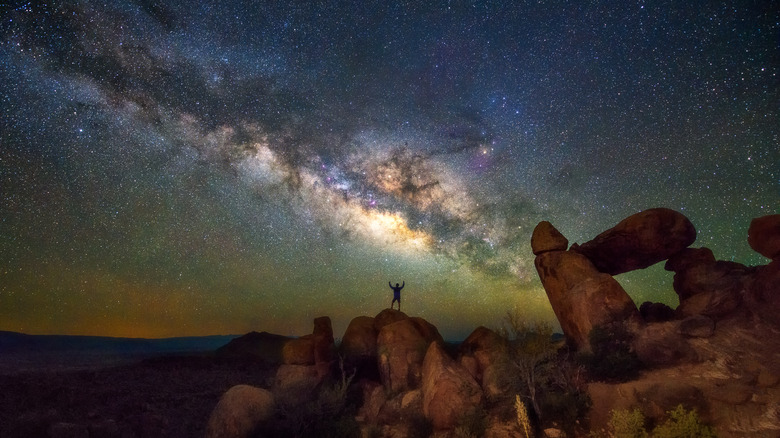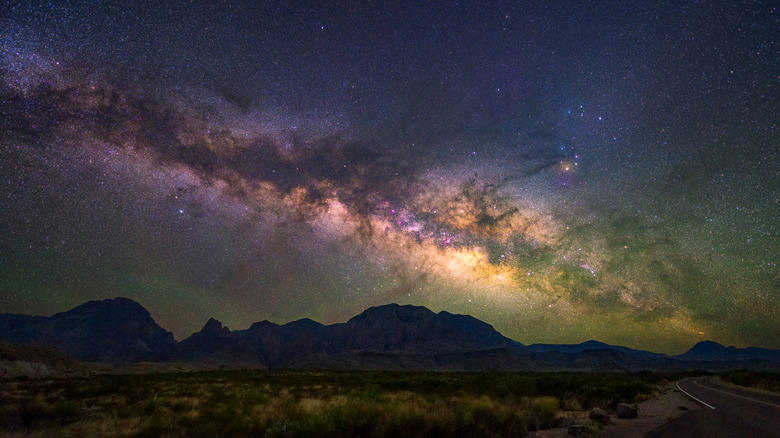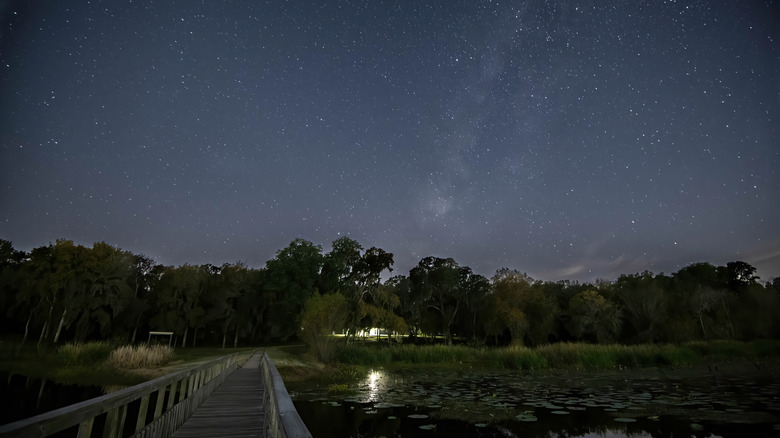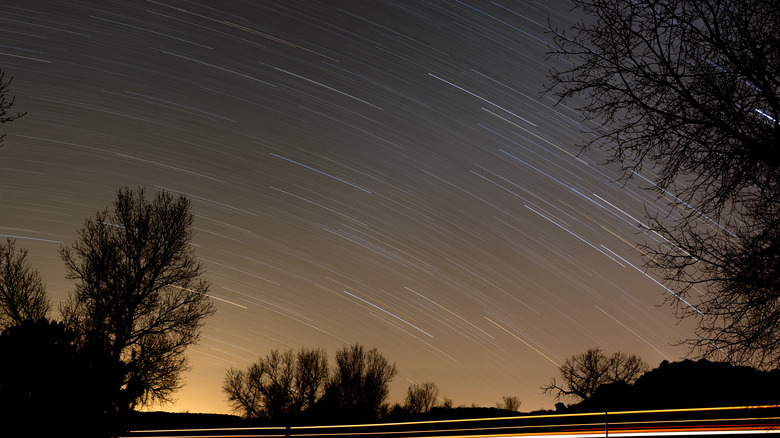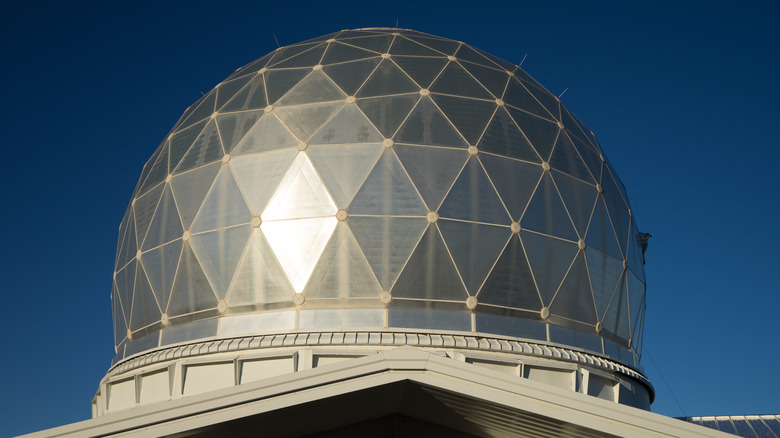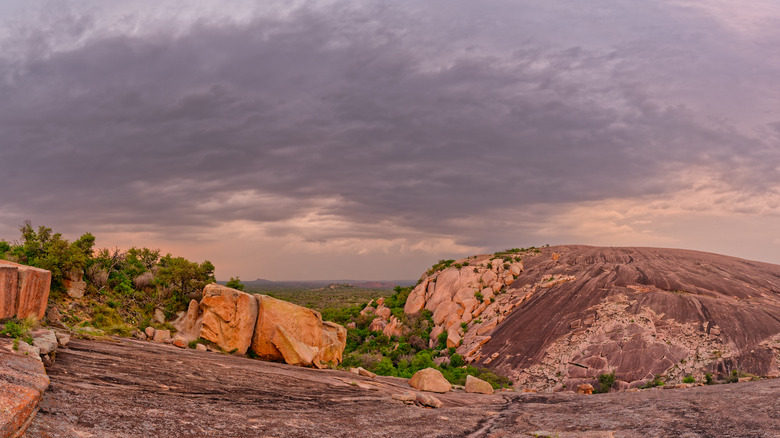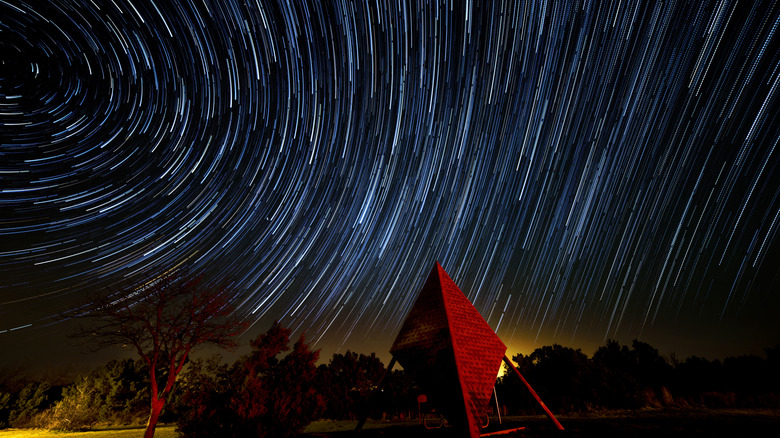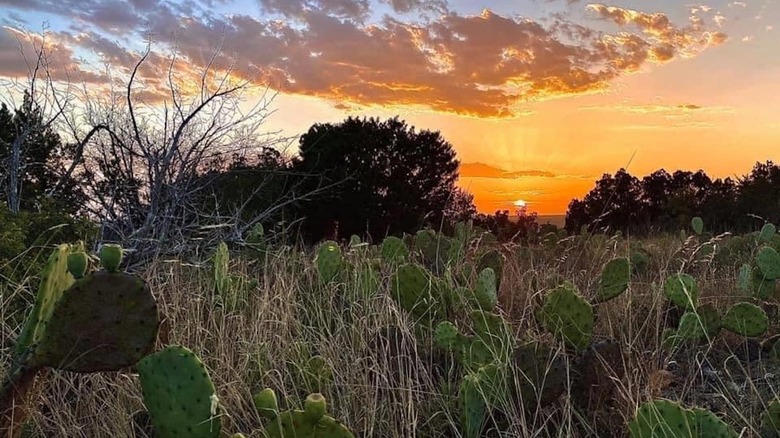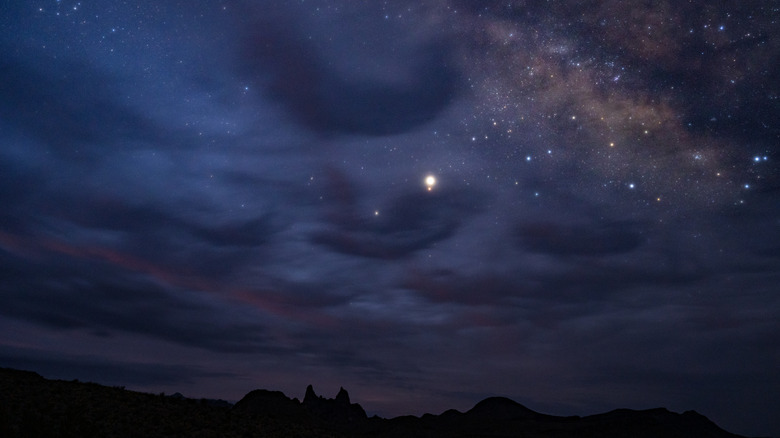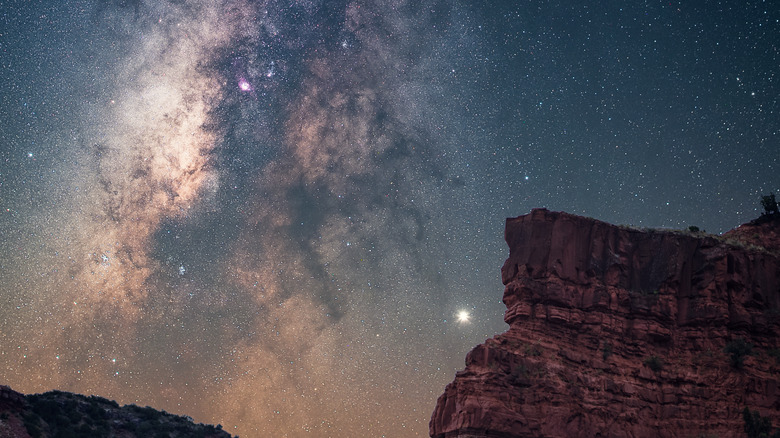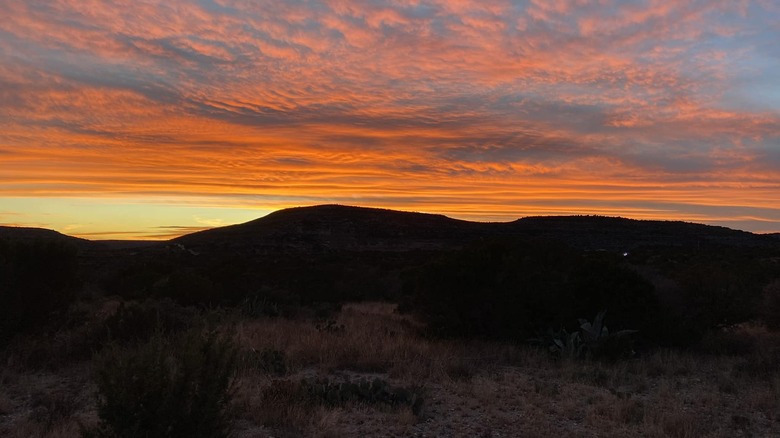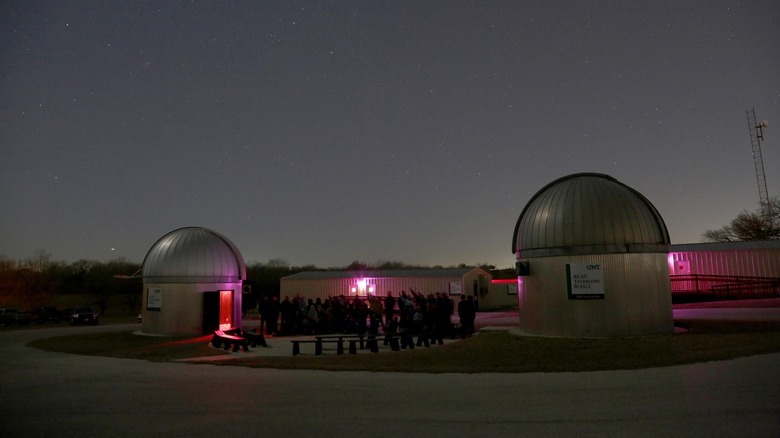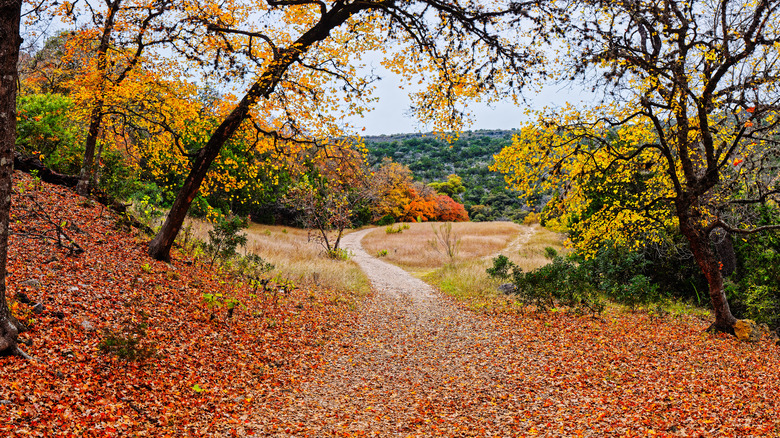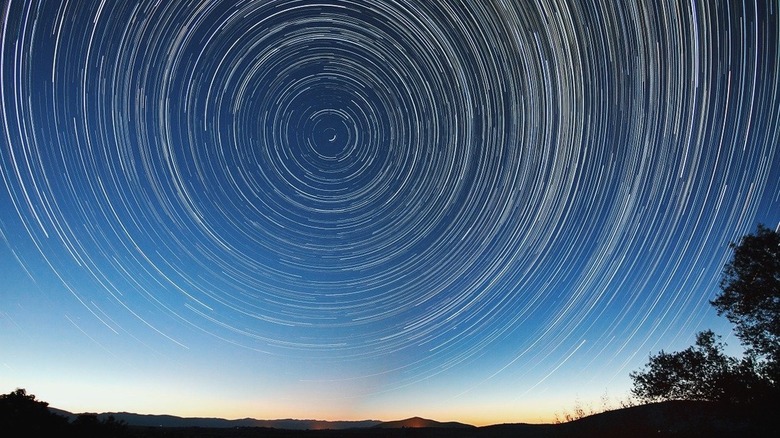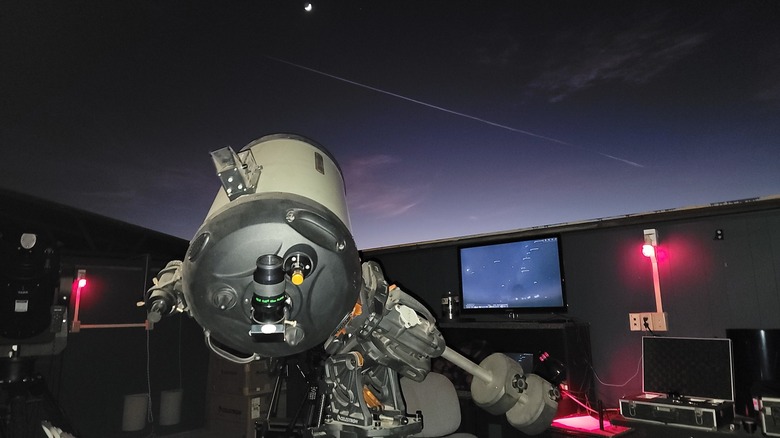The 14 Best Places To Stargaze In Texas
In a state as big and wild as Texas, you'll find ample opportunities for world-class stargazing. Away from the bright lights of the cities, there are some of the darkest skies on Earth. In parts of Texas, you can find Class 1 dark skies, according to the Bortle Dark-Sky Scale. (Class 1 is reserved for the darkest skies on Earth; Class 9 is central Las Vegas, basically.) Whether you choose to visit a national or state park, an observatory, or simply head out into one of the state's remote areas, you'll have a chance to spot constellations, planets, and the Milky Way lighting up the night.
1. Big Bend National Park
Big Bend National Park is part of the Greater Big Bend International Dark Sky Reserve, the world's largest dark sky reserve. Spanning more than nine million acres, the reserve stretches beyond the park's borders, north to Fort Davis and south into Mexico. Its remoteness is what makes it an incredible place for stargazing, but the trip is worth it for the chance to see the night sky in all its glory. You can bask under constellations, meteor showers, and the Milky Way, and take part in the star parties and moonlight walks led by park rangers and volunteers.
2. Brazos Bend State Park
For a less remote experience, visit Brazos Bend State Park, around 45 miles from downtown Houston. Here, you'll find the George Observatory, where you can spend your Saturday nights stargazing. With the help of amateur astronomers, you'll be able to pick out constellations, planets, and even deep-sky objects. The park is full of things to do in the daytime, too, including hiking, biking, and fishing. You'll also have a chance to spot one of the estimated 250 alligators that call the park home.
3. Palo Duro Canyon State Park
If you happen to be in the Texas Panhandle, check out Palo Duro Canyon State Park near Amarillo. First, be sure to arrive by daylight, as the 800-foot-deep canyon is incredibly impressive. Palo Duro Canyon is the second-largest canyon in the U.S. after the Grand Canyon. At Palo Duro Canyon State Park, there are 30 miles of trails where you can hike, ride horses, and bike while exploring the scenic area. As night falls over the spectacular rock formations, the stars come out and put on their show. At times, you'll be able to join rangers for a hike using the SkyGuide app to observe the night sky.
4. McDonald Observatory
For a family-friendly experience, check out McDonald Observatory near Fort Davis, which sits in the Greater Big Bend International Dark Sky Reserve. The observatory puts on star parties several times a week, which give visitors the chance to use the powerful telescopes and learn about the constellations from the knowledgeable staff. The observatory is an important research center and has some of the largest optical telescopes in the U.S.; on special nights throughout the year, you will have the opportunity to use them to gaze at the heavens.
5. Enchanted Rock State Natural Area
The next four places are all designated International Dark Sky Parks, meaning the International Dark Sky Association has certified them as having low levels of light pollution. The parks also offer programs to visitors, so they're excellent places to learn about the stars. In Enchanted Rock State Natural Area, you can behold the Milky Way from any area in the park or join one of the "rock star parties" for a chance to spot a shooting star. The area is in Fredericksburg, which itself is an International Dark Sky Community.
6. Copper Breaks State Park
Copper Breaks State Park is also an International Dark Sky Park, this time near the border with Oklahoma. Every month from April through November, the park hosts a star party, and there are several other celestial-related events during the year. The park is rightfully proud of its Class 2 rating on the Bortle Dark-Sky Scale, which allows you to see the Milky Way and an array of stars from the park's area. Late evening is also a good time to spot some of the park's wildlife, including coyotes, armadillos, and opossums.
7. South Llano River State Park
South Llano River State Park is yet another International Dark Sky Park on our list. During a nighttime visit here, you can take part in a star party or other astronomy program, where you'll have an opportunity to look through a telescope and identify objects in the night sky with an expert. If you want to continue your visit after these events, you're welcome to, but you'll have to pay an additional $5 fee (beyond the $5 entry fee) to stay after 10 p.m.
8. Big Bend Ranch State Park
Another International Dark Sky Park, Big Bend Ranch State Park (next to Big Bend National Park) is in the Big Bend International Dark Sky Reserve and provides visitors with 355,000 acres of prime stargazing real estate. According to Big Bend Ranch State Park, "The best places for stargazing are along River Road, at the West Contrabando Trailhead, Big Hill and the Hoodoos." There is a wide range of events throughout the year for visitors, too.
9. Caprock Canyons State Park & Trailway
Picturesque Caprock Canyons State Park & Trailway can be considered a neighbor of Palo Duro Canyon State Park, at least in Texas terms: the two are a 1.5-hour drive away from each other. The park scores a Class 2 rating on the Bortle Scale, meaning dark skies and excellent stargazing. You can stay overnight in the park at one of the campsites, several of which are walk-in, so the pitch-black night won't be disturbed by vehicle lights. On top of stargazing, the park is famous for its bison and the 90 miles of trails open for hiking and biking.
10. Devils River State Natural Area
Devils River State Natural Area is an International Dark Sky Sanctuary in a remote area of Southwestern Texas, where the night skies are almost completely untouched by light pollution. There is a Dark Sky Viewing Area in the park where you can sit and gaze upon myriad celestial delights. Your trip out here isn't just defined by nighttime activities, though. During the day, you can fish, paddle, and swim in the clear waters of Devils River and enjoy hiking in the wilderness.
11. Rafes Urban Astronomy Center
Dallas residents take note: Rafes Urban Astronomy Center offers you a chance to stargaze less than an hour from home. Operated by the University of North Texas, the center is open to the public on the first and third Saturday of every month. At the public star parties, you'll have a chance to use powerful telescopes to spot objects in the night sky and learn about them from staff and students. The space is also available for private reservations, so you can hold an intimate star party with family and friends.
12. Lost Maples State Natural Area
Less than 2 hours from San Antonio, Lost Maples State Natural Area is renowned for its glorious fall foliage. From mid-October, the trees burst into color and attract plenty of visitors. But, if you can outlast the daytrippers, you'll get to see the night sky come alive too. There are star parties you can attend, as well as a Night Sky Fest in August, or you can simply enjoy the peace and quiet and stare toward the heavens from your own vantage point.
13. Dripping Springs
Dripping Springs is an International Dark Sky Community: a designation given to towns and cities that make efforts to reduce light pollution. There are six International Dark Sky Communities in Texas, including Fredericksburg and Horseshoe Bay. As the town of Dripping Springs began to grow, residents became concerned about the amount of artificial light, and ordinances were put in place to protect the night skies. Thanks to this, you can enjoy stargazing less than 25 miles from Austin.
14. Canyon of the Eagles Nature Park & Resort
If you want to combine your stargazing with an eco-friendly experience in the Texas Hill Country, choose Canyon of the Eagles Nature Park & Resort. The resort has its own Eagle Eye Observatory where, for a small fee, visitors can enjoy exploring the night sky with telescopes and astronomical instruments with an astronomer. There are also astronomy presentations and movies under the stars, as well as a fire pit that is lit every night for guests to relax around. There are tent and RV sites as well as cute rooms for guests to stay in.
